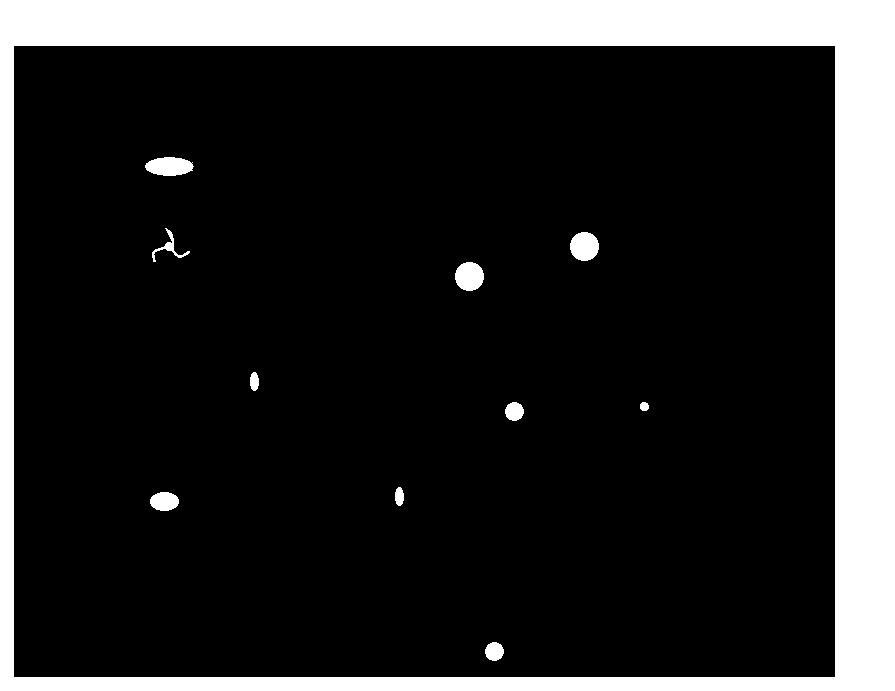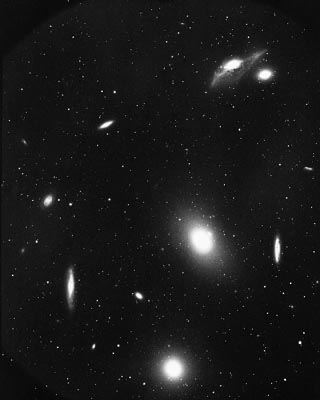Cosmology :Lecture 17
Hubble's Law can be used as a Measure of Distance
If we assume Hubble's law is correct we can use it to measure the distance to
the furthest objects.
The shift in
wavelength of the line, divided by the line's normal wavellength is
called the redshift,
z = (shift in L )/ L
If the velocity is much less that the spped of light the redshift is simply related to v
z = v/c
which allows us to work out v from the shift in wavelength.
Assuming Hubble's law to be correct alows us to work out the distance,
eg. if the velocity of recession is 15,000 km/sec then the distance will be
d = v/H0
and we have
d=15,000(km/s)/( 75 km/s/Mpc )=200Mpc
Note that this can never be completely accurate- the best way to
regard Hubble's law is that of a general drift. Superinposed upon this
will be small local variation. For example within our group, M31 the
Andromeda galaxy is actually blue shifted - indicating it is moving
towards us. The small local; variation is such that it beats the
(small) hubble law effect.
It is possible to redshifts bigger than one. Where z become close to one the above formula ceases to hold. Redshifts bigger than one corresponds to speeds of recession, almost, as large as the speed of light
Large Scale Structure
The Universe looks different depending upon which scale
we view it at.
The concept of thinks looking different at different scales is
fairly familiar. If we view a house the ``global'' picture is quite
differant from a close up view where we see bricks and very diiferent
from a microscopic view.
In examining the Universe as a whole it is usefull to use galaxies
as the core building blocks. We can then draw maps of the positions of galaxies (as best we can..)
Composition of the Universe
It is important to examine how material is distributed throughout the
Universe. We can examine this at various scales,
 |
| Universe
|
| With a scale
|
| Larger scale
|
| Even larger scale
|
| ditto
|
|
At small scales the Universe is very lumpy and density fluctiations
are very large. For example the density of the earth is 5000
kg/m2 and the density of the atmosphere around 1kg/m2
However, at the very largest of scales the Universe is rather even - we can
imagine it like a rather evenly mixed soup which only looks ``grainy''
under the microscope. Note that the scales one has to go to are absolutely HUGE. The size of a galaxy is 100 kpc so material is very lumpy up to this scale. Galaxies cluster in groups of Mpcs
By looking
at maps of galaxies, with distances
infered from Hubble's law the Universe is lumpy right out to 200Mpc
© Dave Dunbar 2020






